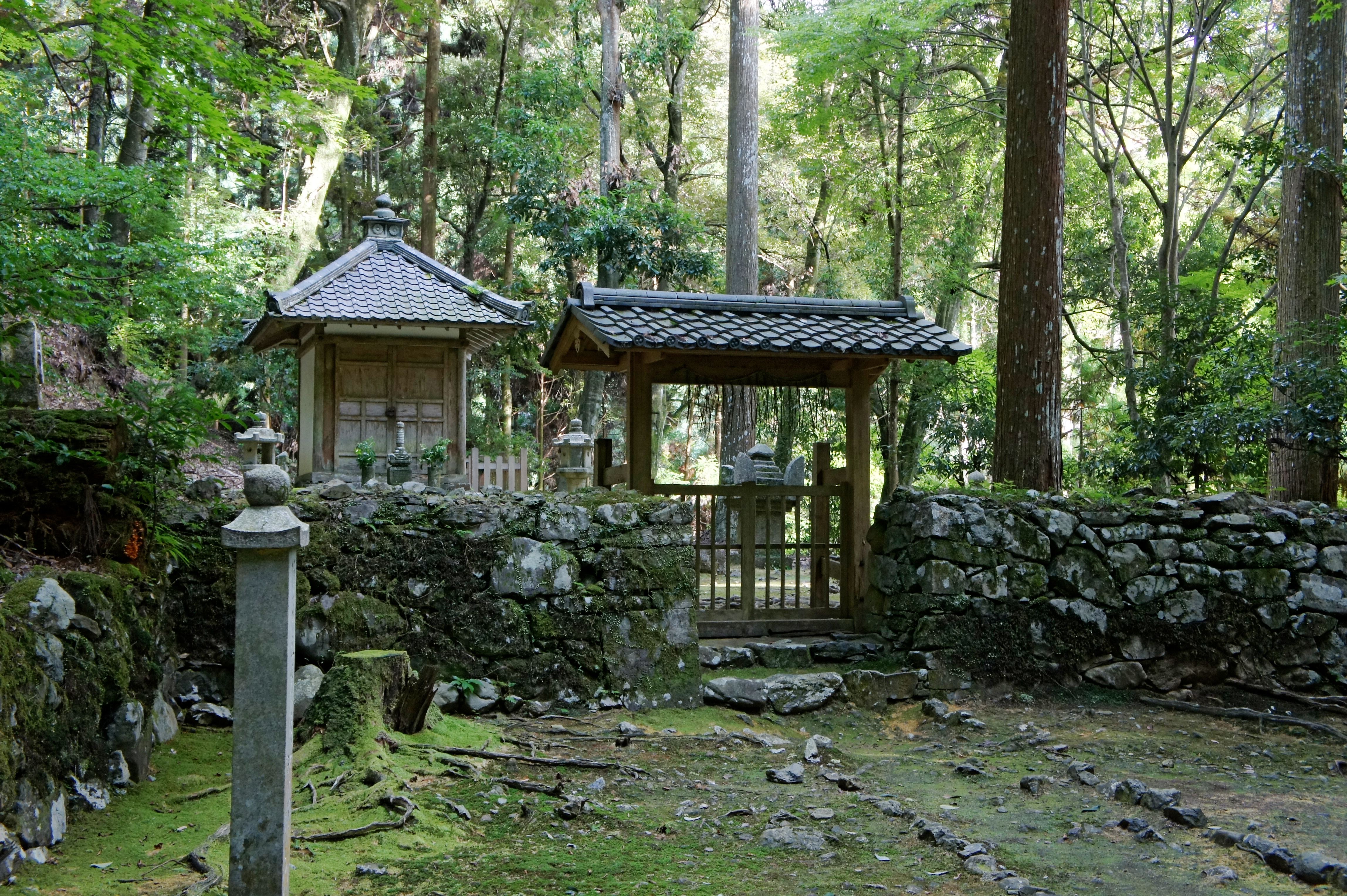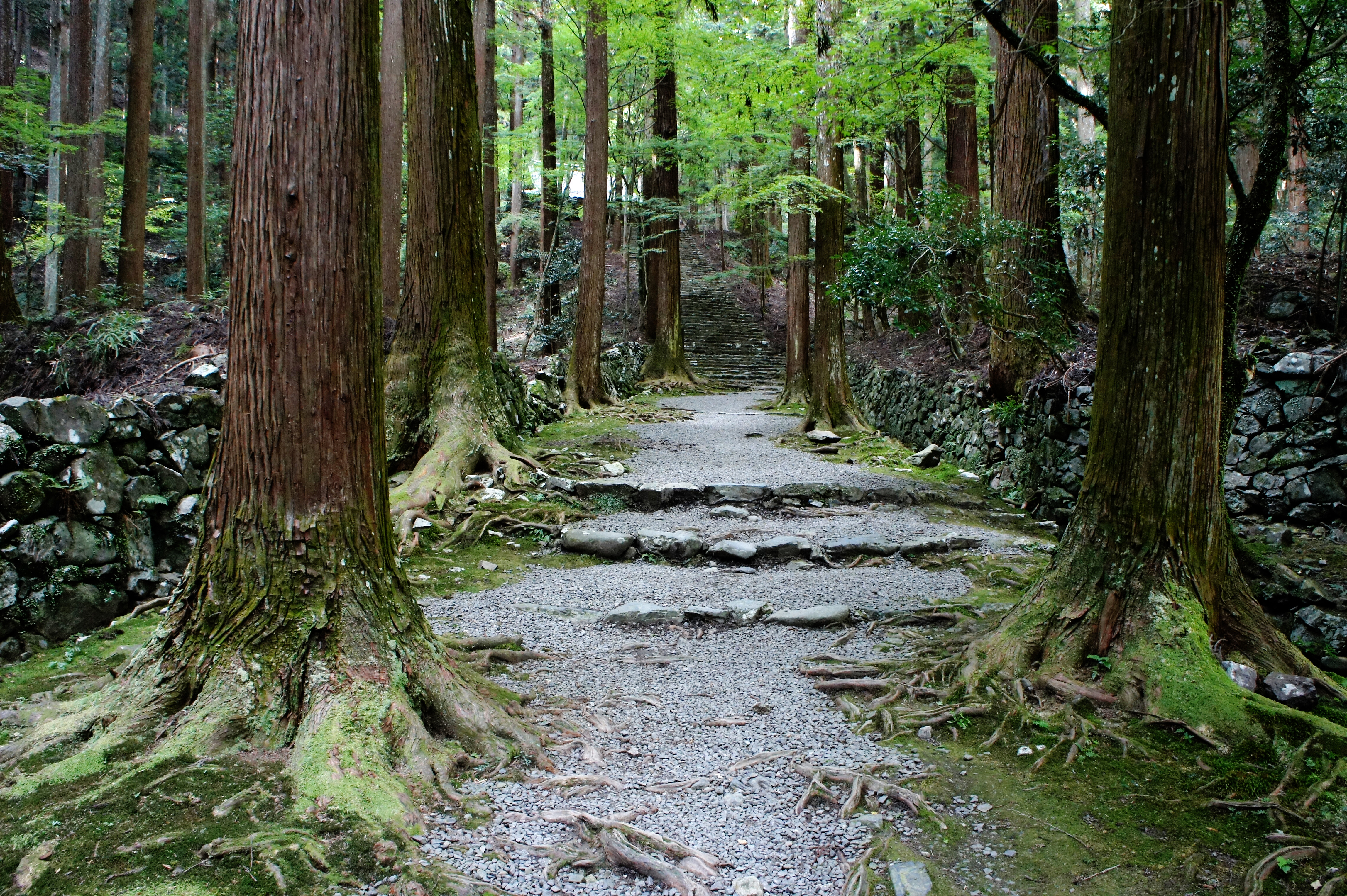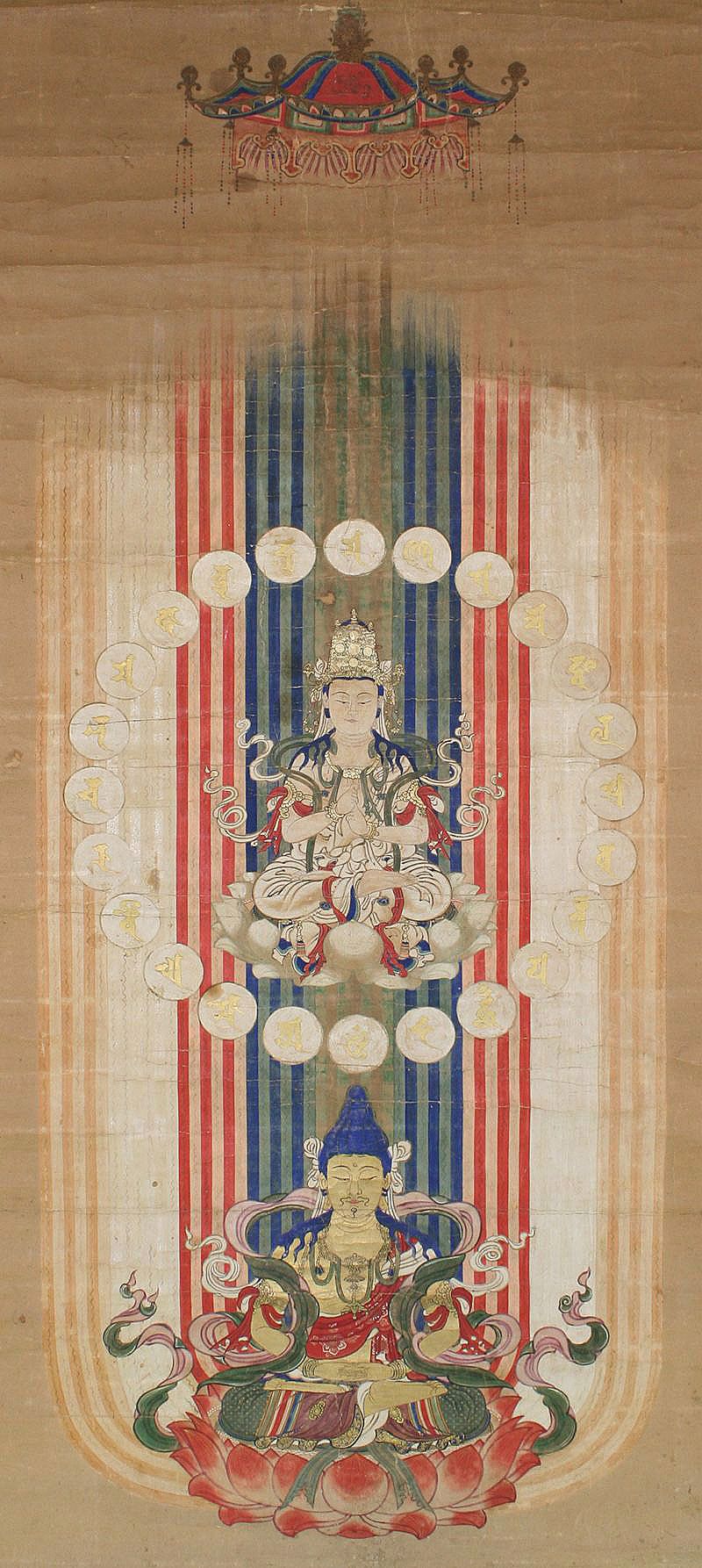|
Myōe
(February 21, 1173 – February 11, 1232) was a Japanese Buddhist monk active during the Kamakura period who also went by the name ''Kōben'' ( ja, 高弁). He was a contemporary of Jōkei and Hōnen. Biography Myōe was born in what is now the town of Aridagawa, Wakayama. His mother was the fourth daughter of Yuasa Muneshige, a local strongman who claimed descent from Taira no Shigekuni, and from thence Emperor Takakura. His childhood name was Yakushi-maru. Orphaned at the age of nine, he was educated at Jingo-ji north of Kyoto by a disciple of Mongaku and was ordained as a priest in 1188 at Tōdai-ji. He was trained in both the Kegon and Kusha schools and trained in Shingon at Ninna-ji. He later also studied Zen Buddhism under Eisai, all by the age of 20. In medieval Japan, it was not uncommon for monks to be ordained in multiple sectarian lineages, and Myōe alternately signed his treatises and correspondence as a monk of various schools through much of his career. H ... [...More Info...] [...Related Items...] OR: [Wikipedia] [Google] [Baidu] |
Kōzan-ji
, officially , is a Buddhist temple of the Omuro sect of Shingon Buddhism in Umegahata Toganōchō, Ukyō Ward, Kyoto, Japan. Kōzan-ji is also known as Kōsan-ji and Toganō-dera. The temple was founded by the Shingon scholar and monk Myōe (1173 – 1232) and is renowned for its numerous national treasures and important cultural properties. The Chōjū-jinbutsu-giga, a group of ink paintings from the 12th and 13th centuries, are among the most important treasures of Kōzan-ji. The temple celebrates Biyakkōshin, Zenmyōshin and Kasuga Myōjin, as well as the temple's tutelary Shintō deity. In 1994, it was registered as part of the UNESCO World Heritage Site " Historic Monuments of Ancient Kyoto". History Togano, located deep in the mountains behind Jingo-ji temple, which are famous for their autumn foliage, is considered an ideal location for mountain asceticism, and there have long been many small temples in this location. In addition to Kosan-ji, there have been oth ... [...More Info...] [...Related Items...] OR: [Wikipedia] [Google] [Baidu] |
Jōkei (monk)
(1155–1213) was an influential bhikkhu, Buddhist scholar-monk and reformer of the East Asian Yogācāra sect in Japan, posthumously known as . Jōkei was a prolific author, asserting and compiling the Yogācāra doctrine while simultaneously refuting newer movements, particularly the Pure Land Buddhism, Pure Land movement begun by Hōnen. Like his contemporary Myōe, Jōkei sought to make Buddhism more accessible to the public through the promotion of rebirth to Mount Potalaka, the dwelling of the bodhisattva Guanyin#Names in other Asian languages, Kannon, or aspiring for rebirth in Tushita, where the bodhisattva Maitreya dwells. Jōkei actively promoted devotion to Gautama Buddha, the historical founder, through devotional practices, access to ''śarīra'' (relics of the Buddha), and promotion of the traditional monastic code, the Vinaya. Biography Jōkei was born into the prestigious, but rapidly declining Fujiwara clan, Fujiwara at a time when the Taira clan was gaining as ... [...More Info...] [...Related Items...] OR: [Wikipedia] [Google] [Baidu] |
Kegon
The Huayan or Flower Garland school of Buddhism (, from sa, अवतंसक, Avataṃsaka) is a tradition of Mahayana Buddhist philosophy that first flourished in China during the Tang dynasty (618-907). The Huayan worldview is based primarily on the '' Avatamsaka Sutra'' () as well as on the works of the Huayan patriarchs, like Fazang. The name ''Flower Garland'' is meant to suggest the crowning glory of a Buddha's profound understanding of ultimate reality. The Huayan School is known as Hwaeom in Korea, Kegon in Japan and Hoa Nghiêm in Vietnam. This tradition also had a strong influence on Chan Buddhism. History Origins There are various versions of the ''Avatamsaka sutra.'' The earliest texts associated with the ''Avatamsaka sutra'' are the ''Dousha jing'' (Taisho 280), produced by Lokaksema in the latter part of the second century CE and the ''Pusa benye jing'' (T. 281), translated by Zhi Qian in the early to mid third century. There is evidence that these sma ... [...More Info...] [...Related Items...] OR: [Wikipedia] [Google] [Baidu] |
Mongaku
Mongaku (文覚) was a Japanese samurai and Shingon Buddhist priest of the late Heian and early Kamakura period. He was a close associate of shogun Minamoto no Yoritomo, having contributed to the declaration of the Genpei War. Myōe was the disciple of his disciple Jōkaku. His secular name, before ordination, was Endō Moritō. He is also known as Mongaku Shōnin. Life Mongaku was born the son of Endō Mochitō, a samurai in the Watanabe faction of the Settsu Genji clan (a branch of the Minamoto clan). He initially served in the Imperial Palace Guards of the North Side. He fell in love with Kesa, the wife of Minamoto no Wataru, but killed her by accident. Out of repentance, he then ordinated as a priest, visiting sacred places across the country. Mongaku moved to live at Jingo-ji temple in 1168, and participated in its restoration work motivated by his reverence towards Kūkai. In 1173, he requested a manorial temple estate for Jingo-ji from Cloistered Emperor Go-Shirakawa ... [...More Info...] [...Related Items...] OR: [Wikipedia] [Google] [Baidu] |
Hōnen
was the religious reformer and founder of the first independent branch of Japanese Pure Land Buddhism called . He is also considered the Seventh Jōdo Shinshū Patriarch. Hōnen became a Tendai initiate at an early age, but grew disaffected and sought an approach to Buddhism that anyone could follow, even during the perceived Age of Dharma Decline. After discovering the writings of the Chinese Buddhist Shandao, he undertook the teaching of rebirth in the pure land of Amitābha through nianfo or "recitation of the Buddha's name". Hōnen gathered a wide array of followers and critics. Emperor Tsuchimikado exiled Hōnen and his followers in 1207 after an incident regarding two of his disciples in addition to persuasion by influential Buddhist communities. Hōnen was eventually pardoned and allowed to return to Kyoto, where he stayed for a short time before his death. Biography Early life Hōnen was born to a prominent family in the city of Kume in Mimasaka Province. H ... [...More Info...] [...Related Items...] OR: [Wikipedia] [Google] [Baidu] |
Senchakushū
The , abbreviated to ''Senchakushū'', is the magnum opus of Hōnen, founder of the Jōdo-shū school of Japanese Pure Land Buddhism. The title means "Collection of Selections on Nenbutsu and the Original Vow" and draws upon past Pure Land Buddhist sources, sutras and especially from the writings of Chinese Pure Land Buddhists Shan-tao and Tanluan to bolster Hōnen's doctrine of relying upon the sole recitation of Amitabha Buddha's name for rebirth in the Pure Land. Hōnen also asserts for the first time that he is establishing a new school of Buddhism. Originally the ''Senchakushū'' had been composed at the behest of Hōnen's patron and disciple, Lord Kūjō Kanezane, in 1198, but Hōnen was hesitant to show the Senchakushū to a wider audience during his lifetime due to fears of criticism. Instead, he showed the text to his closest disciples only including Benchō, Shinran, Shōkū among others. Hōnen stated that his disciples could do what they wanted with the text af ... [...More Info...] [...Related Items...] OR: [Wikipedia] [Google] [Baidu] |
Pure Land Buddhism
Pure Land Buddhism (; ja, 浄土仏教, translit=Jōdo bukkyō; , also referred to as Amidism in English,) is a broad branch of Mahayana Buddhism focused on achieving rebirth in a Buddha's Buddha-field or Pure Land. It is one of the most widely practiced traditions of Buddhism in East Asia. According to Charles B. Jones "Pure Land is the dominant form of Buddhism in China, Japan and Korea."Jones, Charles B. (2021). ''Pure Land: History, Tradition, and Practice'', p. xii. Shambhala Publications, . In Chinese Buddhism, the tradition is sometimes called a zōng (school) in an institutional sense, but historically it was most commonly described as a "dharma-gate" (fǎmén 法門), referring to a method of Buddhist practice. In Japanese Buddhism, the term more commonly refers to specific institutions.Jones, Charles B. (2019) ''Chinese Pure Land Buddhism, Understanding a Tradition of Practice,'' pp. 10-12. University of Hawai‘i Press / Honolulu. In Tibetan Buddhism, prayers an ... [...More Info...] [...Related Items...] OR: [Wikipedia] [Google] [Baidu] |
Mantra Of Light
The Mantra of Light, also called the ''Mantra of the Unfailing Rope Snare'', is an important mantra of the Shingon and Kegon sects of Buddhism, but is not emphasized in other Vajrayana sects of Buddhism. It is taken from the ''Amoghapāśa-kalparāja-sūtra'' (Chinese translation Taisho ed. no. 1092) or ''Sutra of the Mantra of the Unfailing Rope Snare of the Buddha Vairocana's Great Baptism'' and is associated with the deity Amoghapāśa (Unfailing Rope), a form of Avalokiteshvara''.'' The mantra is the following: * Sanskrit :Roman Script: Oṃ Amogha Vairocana Mahāmudrā Maṇipadma Jvalapravartāya Hūṃ :Devanagari: ॐ अमोघ वैरोचन महामुद्रा मणिपद्म ज्वल प्रवर्ताय हूँ : Siddhaṃ: : *Japanese: おん あぼきゃ べいろしゃのう まかぼだら まに はんどま じんばら はらばりたや うん Om abogya beiroshanō makabodara mani handoma jinbara harabari tayaun *Korean: ... [...More Info...] [...Related Items...] OR: [Wikipedia] [Google] [Baidu] |
Avatamsaka Sutra
The ' (IAST, sa, 𑀅𑀯𑀢𑀁𑀲𑀓 𑀲𑀽𑀢𑁆𑀭) or ''Buddhāvataṃsaka-nāma-mahāvaipulya-sūtra (The Mahāvaipulya Sūtra named “Buddhāvataṃsaka”)'' is one of the most influential Mahāyāna sutras of East Asian Buddhism. In Classical Sanskrit, ''avataṃsaka'' means garland, wreath, or any circular ornament, such as an earring.'''' Thus, the title may be rendered in English as ''A Garland of Buddhas'', ''Buddha Ornaments'', or ''Buddha’s Garland''. In Buddhist Hybrid Sanskrit, the term ''avataṃsaka'' means “a great number,” “a multitude,” or “a collection.” This is matched by the Tibetan title of the sutra, which is ''A Multitude of Buddhas'' (''""''). The ''Buddhāvataṃsaka'' has been described by the translator Thomas Cleary "the most grandiose, the most comprehensive, and the most beautifully arrayed of the Buddhist scriptures." The ' describes a cosmos of infinite realms upon realms, mutually containing one another. This su ... [...More Info...] [...Related Items...] OR: [Wikipedia] [Google] [Baidu] |
Eisai
was a Japanese Buddhist priest, credited with founding the Rinzai school, the Japanese line of the Linji school of Zen Buddhism. In 1191, he introduced this Zen approach to Japan, following his trip to China from 1187 to 1191, during which he was initiated into the Linji school by the master Hsü an. It is also said that he popularized green tea in Japan, following this same trip. He was also the founding abbot of Japan's first Zen temple Shōfuku-ji and Kennin-ji. He is often known simply as Eisai/Yōsai Zenji (栄西禅師), literally "Zen master Eisai". Biography Born in Bitchū Province (modern-day Okayama, Okayama), Eisai was ordained as a monk in the Tendai sect. Dissatisfied with the state of Buddhism at the time, in 1168 he set off on his first trip to Mount Tiantai in China, the origin of the sect, where he learned of the primacy of the Chan (later known in Japan as Zen) school in Chinese Buddhism of the time. He spent only six months in China on this first trip, b ... [...More Info...] [...Related Items...] OR: [Wikipedia] [Google] [Baidu] |
Oracle
An oracle is a person or agency considered to provide wise and insightful counsel or prophetic predictions, most notably including precognition of the future, inspired by deities. As such, it is a form of divination. Description The word ''oracle'' comes from the Latin verb ''ōrāre'', "to speak" and properly refers to the priest or priestess uttering the prediction. In extended use, ''oracle'' may also refer to the ''site of the oracle'', and to the oracular utterances themselves, called ''khrēsmē'' 'tresme' (χρησμοί) in Greek. Oracles were thought to be portals through which the gods spoke directly to people. In this sense, they were different from seers (''manteis'', μάντεις) who interpreted signs sent by the gods through bird signs, animal entrails, and other various methods.Flower, Michael Attyah. ''The Seer in Ancient Greece.'' Berkeley: University of California Press, 2008. The most important oracles of Greek antiquity were Pythia (priestess to Apo ... [...More Info...] [...Related Items...] OR: [Wikipedia] [Google] [Baidu] |
Kasuga-taisha
is a Shinto shrine in Nara, Nara Prefecture, Japan. It is the shrine of the Fujiwara family, established in 768 CE and rebuilt several times over the centuries. The interior is famous for its many bronze lanterns, as well as the many stone lanterns that lead up the shrine. The architectural style '' Kasuga-zukuri'' takes its name from Kasuga Shrine's ''honden'' (sanctuary). The Torii at Kasuga-taisha is one of the oldest in Shinto and helped influence the style of Torii seen across much of Japan. Kasuga Shrine, and the Kasugayama Primeval Forest near it, are registered as a UNESCO World Heritage Site as part of the "Historic Monuments of Ancient Nara". The path to Kasuga Shrine passes through a deer park. In the park, deer are able to roam freely and are believed to be sacred messengers of the Shinto gods that inhabit the shrine and surrounding mountainous terrain. Kasuga Shrine and the deer have been featured in several paintings and works of art of the Nambokucho Period. O ... [...More Info...] [...Related Items...] OR: [Wikipedia] [Google] [Baidu] |







_-_BL_Or._7377.jpg)
